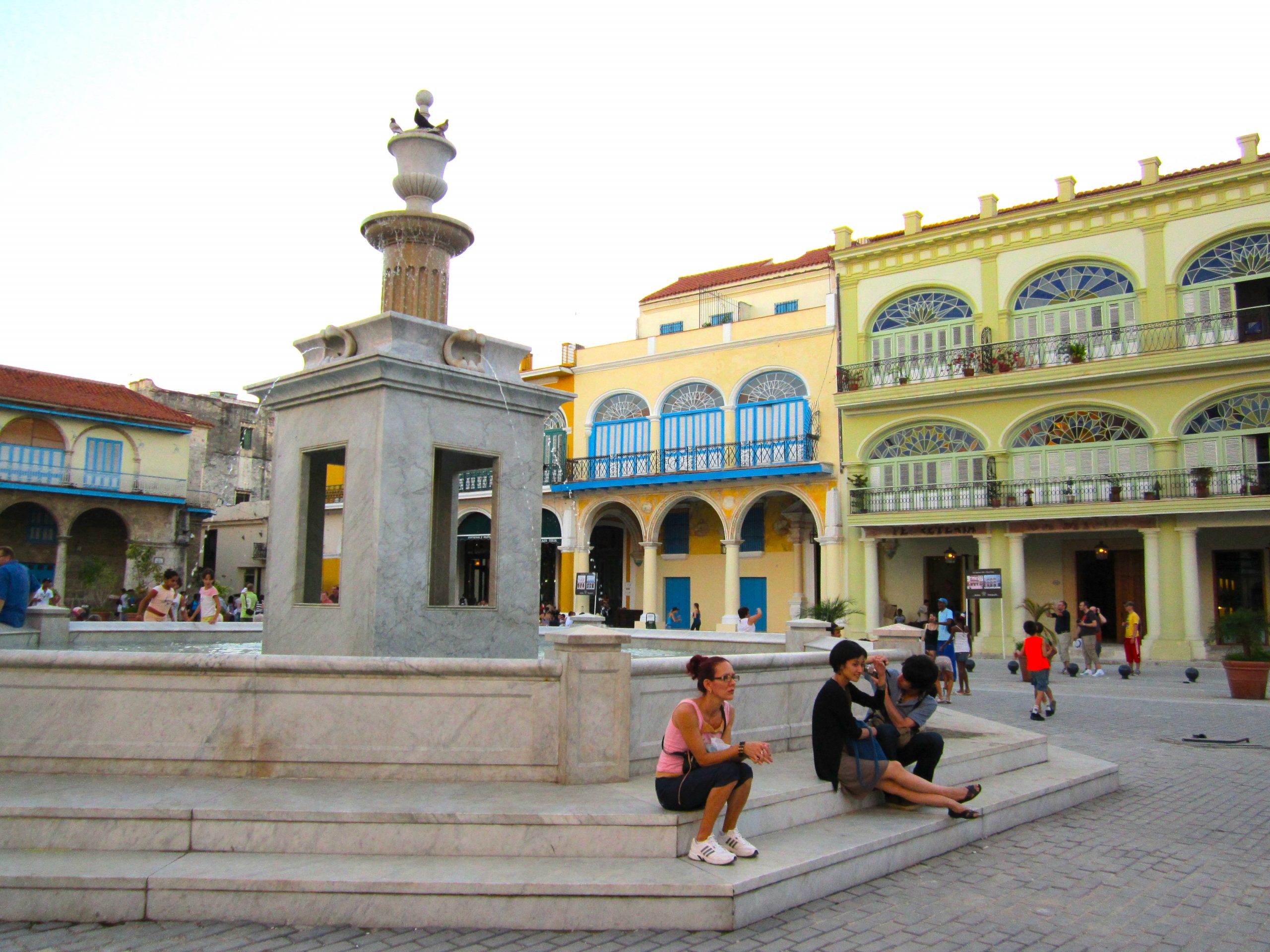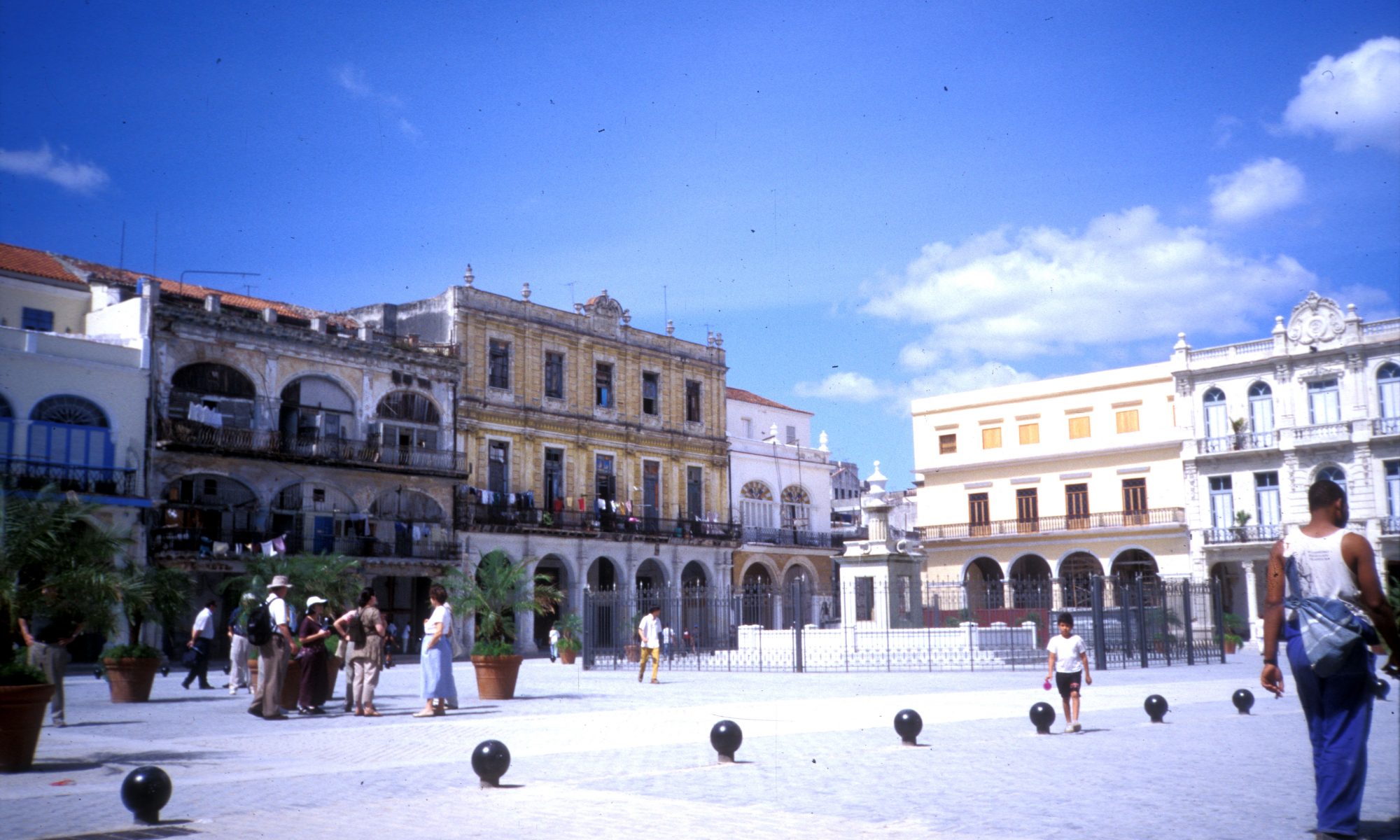By the early 2000s, progress on the relocation of residents paralleled the radical facelift and restoration of building interiors on the Plaza Vieja. German financing produced Cuba’s first craft brewery. The old post office, remembered as one of the “only good things the Americans knew how to run” during the US Military Occupation of 1898-1902, became a museum. Another building became a government art gallery. Yet identifying the holdouts was easy, given the tell-tale hanging of freshly washed laundry on the balconies of two of the most opulent, central façades. When I returned to Cuba in 2011 after a two-year hiatus, everyone told me I had to go see the results of the government’s (by then) forced relocation of families still occupying these former mansions. To my awe, the plaza’s central fountain was no longer encircled by the wrought-iron fence! A local merolico told me that the “veterans” who struggled to keep their homes from “confiscation” should be selling t-shirts since they received no part of the millions of dollars that their homes, now luxury condominiums, eventually sold and rented for. The t-shirts could read, he joked, No Cubans, No Fence.


